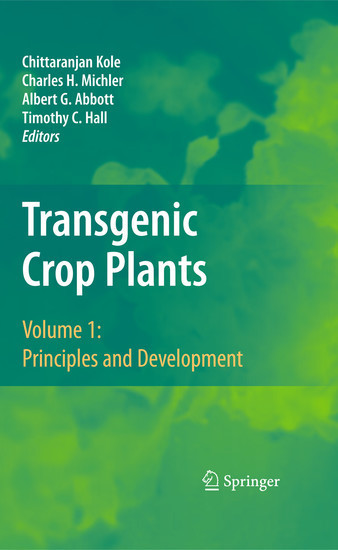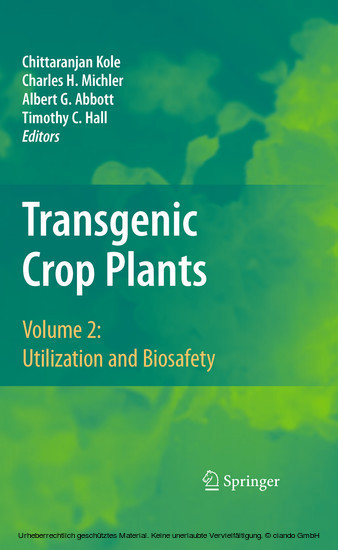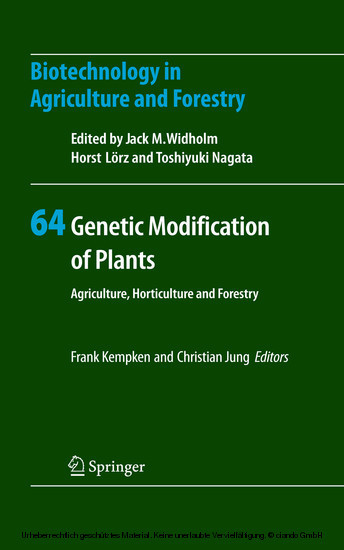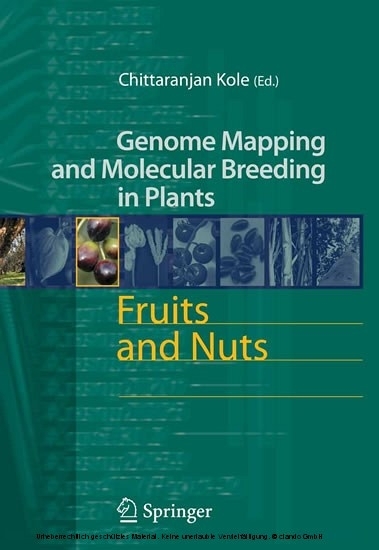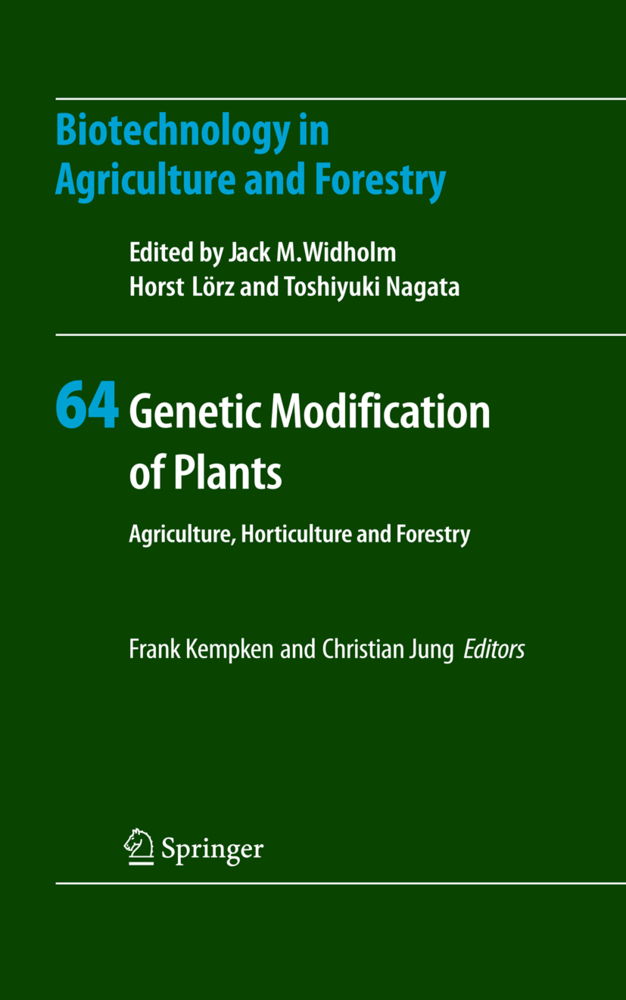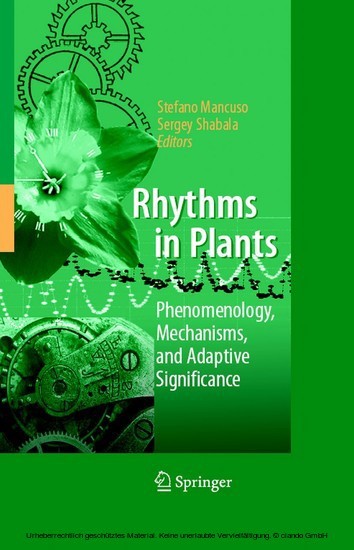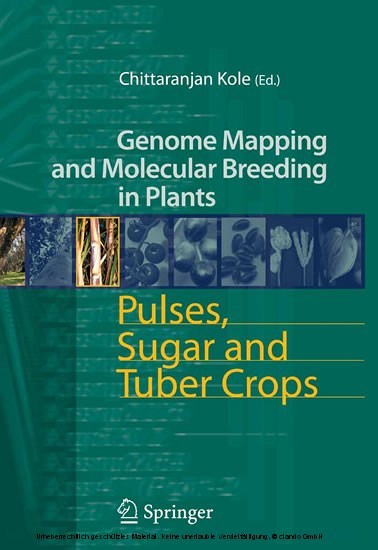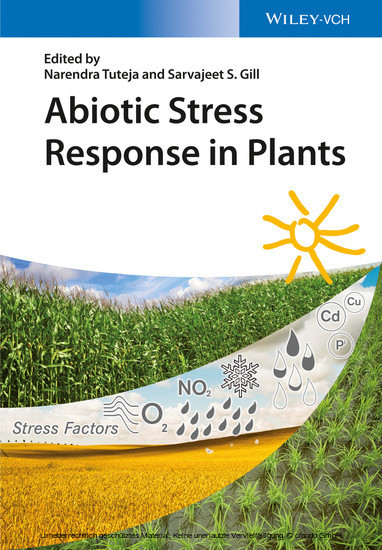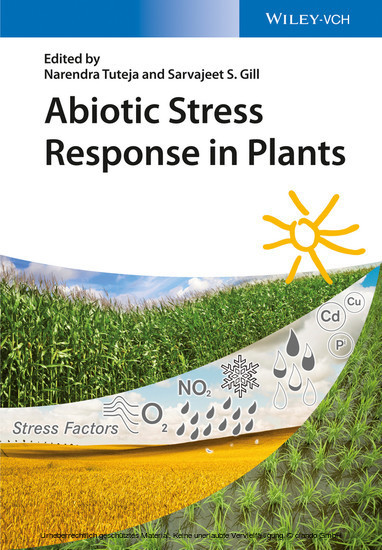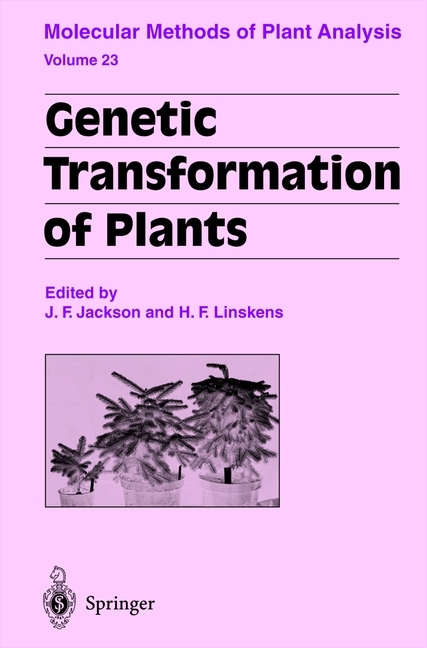Transgenic Crop Plants
Development of transgenic crop plants, their utilization for improved agriculture, health, ecology and environment and their socio-political impacts are currently important fields in education, research and industries and also of interest to policy makers, social activists and regulatory and funding agencies. This work prepared with a class-room approach on this multidisciplinary subject will fill an existing gap and meet the requirements of such a broad section of readers.
Volume 1 with ten chapters contributed by 31 eminent scientists from nine countries deliberates on the basic concepts, strategies and tools for development of transgenic crop plants, including topics such as: explants used for the generation of transgenic plants, gene transfer methods, organelle transformation, selection and screening strategies, expression and stability of transgenes, silencing undesirable genes, transgene integration, biosynthesis and biotransformation and metabolic engineering of pathways and gene discovery.
1;Transgenic Crop Plants;2 1.1;Title Page;3 1.2;Copyright Page;4 1.3;Preface;5 1.4;Contents;10 1.5;Contributors;12 1.6;Abbreviations;15 1.7;Chapter 1;21 1.7.1;Generation and Deployment of Transgenic Crop Plants: An Overview;21 1.7.1.1;1.1 Introduction;21 1.7.1.2;1.2 Target Cells and Organelles for Genetic Transformation;22 1.7.1.3;1.3 Methods for Introducing Genes into Plants;23 1.7.1.4;1.4 Vector Construction and Genes for Plant Transformation;26 1.7.1.4.1;1.4.1 Promoters for Plant Transformation;27 1.7.1.4.2;1.4.2 Reporter and Selectable Marker Genes;29 1.7.1.5;1.5 Methods for Screening of Genes Introduced into Putatively Transformed Plants;31 1.7.1.6;1.6 Gene Expression in Transgenic Plants;31 1.7.1.7;1.7 Target Genes for Genetic Transformation;32 1.7.1.7.1;1.7.1 Resistance to Biotic and Abiotic Stresses;33 1.7.1.7.2;1.7.2 Improvement of Quality;35 1.7.1.7.3;1.7.3 Biopharmaceuticals;36 1.7.1.7.4;1.7.4 Phytoremediation;37 1.7.1.7.5;1.7.5 Floriculture;37 1.7.1.8;1.8 Risks and Concerns;39 1.7.1.9;1.9 General Conclusions;39 1.7.1.10;References;40 1.8;Chapter 2;50 1.8.1;Explants Used for the Generation of Transgenic Plants;50 1.8.1.1;2.1 Introduction;50 1.8.1.2;2.2 Explants Used for the Transformation of Herbaceous Plants;51 1.8.1.2.1;2.2.1 Cereals;51 1.8.1.2.2;2.2.2 Brassica;51 1.8.1.2.3;2.2.3 Cassava;52 1.8.1.2.4;2.2.4 Potato;52 1.8.1.2.5;2.2.5 Sugarcane;52 1.8.1.2.6;2.2.6 Banana;53 1.8.1.2.7;2.2.7 Carnation;53 1.8.1.2.8;2.2.8 Tomato;53 1.8.1.2.9;2.2.9 Soybean;54 1.8.1.2.10;2.2.10 Alfalfa;55 1.8.1.2.11;2.2.11 Sunflower;55 1.8.1.2.12;2.2.12 Cucumber;55 1.8.1.2.13;2.2.13 Eggplant;56 1.8.1.2.14;2.2.14 Melon;56 1.8.1.2.15;2.2.15 Strawberry;56 1.8.1.3;2.3 Explants Used for the Transformation of Woody Plants;57 1.8.1.3.1;2.3.1 Almond;58 1.8.1.3.2;2.3.2 Apple;59 1.8.1.3.3;2.3.3 Apricot;59 1.8.1.3.4;2.3.4 Blueberry;59 1.8.1.3.5;2.3.5 Birch;60 1.8.1.3.6;2.3.6 Citrus;61 1.8.1.3.7;2.3.7 Cherry;61 1.8.1.3.8;2.3.8 Eucalyptus;62 1.8.1.3.9;2.3.9 Kiwi;62 1.8.1.3.10;2.3.10 Larch;63 1.8.1.3.11;2.3.11 Peach;63 1.8.1.3.12;2.3.12 Pear;64 1.8.1.3.13;2.3.13 Pine;64 1.8.1.3.14;2.3.14 Plum;64 1.8.1.3.15;2.3.15 Populus;65 1.8.1.3.16;2.3.16 Spruces;65 1.8.1.3.17;2.3.17 Walnut;66 1.8.1.4;2.4 Concluding Remarks;66 1.8.1.5;References;66 1.9;Chapter 3;76 1.9.1;Gene Transfer Methods;76 1.9.1.1;3.1 Introduction;76 1.9.1.2;3.2 Gene Delivery Methods;77 1.9.1.2.1;3.2.1 Biological Methods;80 1.9.1.2.1.1;3.2.1.1 Agrobacterium-Mediated Gene Transfer;80 1.9.1.2.1.2;3.2.1.2 Agroinfection;84 1.9.1.2.1.3;3.2.1.3 Virus-induced Gene Silencing (VIGS);84 1.9.1.2.1.4;3.2.1.4 Other Microorganisms for DNA Delivery;85 1.9.1.3;3.3 Physical Methods;86 1.9.1.3.1;3.3.1 Liposome-Mediated Delivery;86 1.9.1.3.2;3.3.2 Nanoparticles;87 1.9.1.3.3;3.3.3 Microinjection;87 1.9.1.3.4;3.3.4 Silicon Carbide Whiskers;88 1.9.1.3.5;3.3.5 Microprojectile Bombardment;89 1.9.1.3.6;3.3.6 Electroporation;91 1.9.1.3.7;3.3.7 Other Potential Physical Methods;92 1.9.1.4;3.4 Combined Physical and Biological DNA Delivery;92 1.9.1.4.1;3.4.1 Agrolistic;92 1.9.1.4.2;3.4.2 Sonication-Assisted Delivery;93 1.9.1.5;3.5 Concluding Remarks;93 1.9.1.6;References;94 1.10;Chapter 4;103 1.10.1;Selection and Screening Strategies;103 1.10.1.1;4.1 Introduction;103 1.10.1.2;4.2 Selection Strategies;104 1.10.1.2.1;4.2.1 Positive Selection;104 1.10.1.2.1.1;4.2.1.1 Shoot/Root Phenotypic-Based Positive Selection;104 1.10.1.2.1.1.1;Isopentyl Transferase;104 1.10.1.2.1.1.2;Enhancer of Shoot Regeneration 1;105 1.10.1.2.1.1.3;Histidine Kinase;106 1.10.1.2.1.1.4;Homeodomain-Containing Knotted1 Protein;106 1.10.1.2.1.1.5;b-Glucuronidase;106 1.10.1.2.1.1.6;Root Locus (ROL) Proteins;107 1.10.1.2.1.2;4.2.1.2 Carbon-Based Positive Selection;107 1.10.1.2.1.2.1;Xylose Isomerase;107 1.10.1.2.1.2.2;Phosphomannose Isomerase;108 1.10.1.2.1.2.3;D-Arabitol Dehydrogenase;108 1.10.1.2.1.3;4.2.1.3 Auxotrophic Markers;108 1.10.1.2.1.4;4.2.1.4 Selection with Biotic and Abiotic Stresses;109 1.10.1.2.1.4.1;Pathogen Resistance;109 1.10.1.2.1.4.2;High S
Kole, Chittaranjan
Kole, Chittaranjan
Kole, Chittaranjan
Michler, Charles H.
Abbott, Albert G.
| ISBN | 9783642048098 |
|---|---|
| Artikelnummer | 9783642048098 |
| Medientyp | E-Book - PDF |
| Auflage | 2. Aufl. |
| Copyrightjahr | 2010 |
| Verlag | Springer-Verlag |
| Umfang | 807 Seiten |
| Sprache | Englisch |
| Kopierschutz | Digitales Wasserzeichen |

